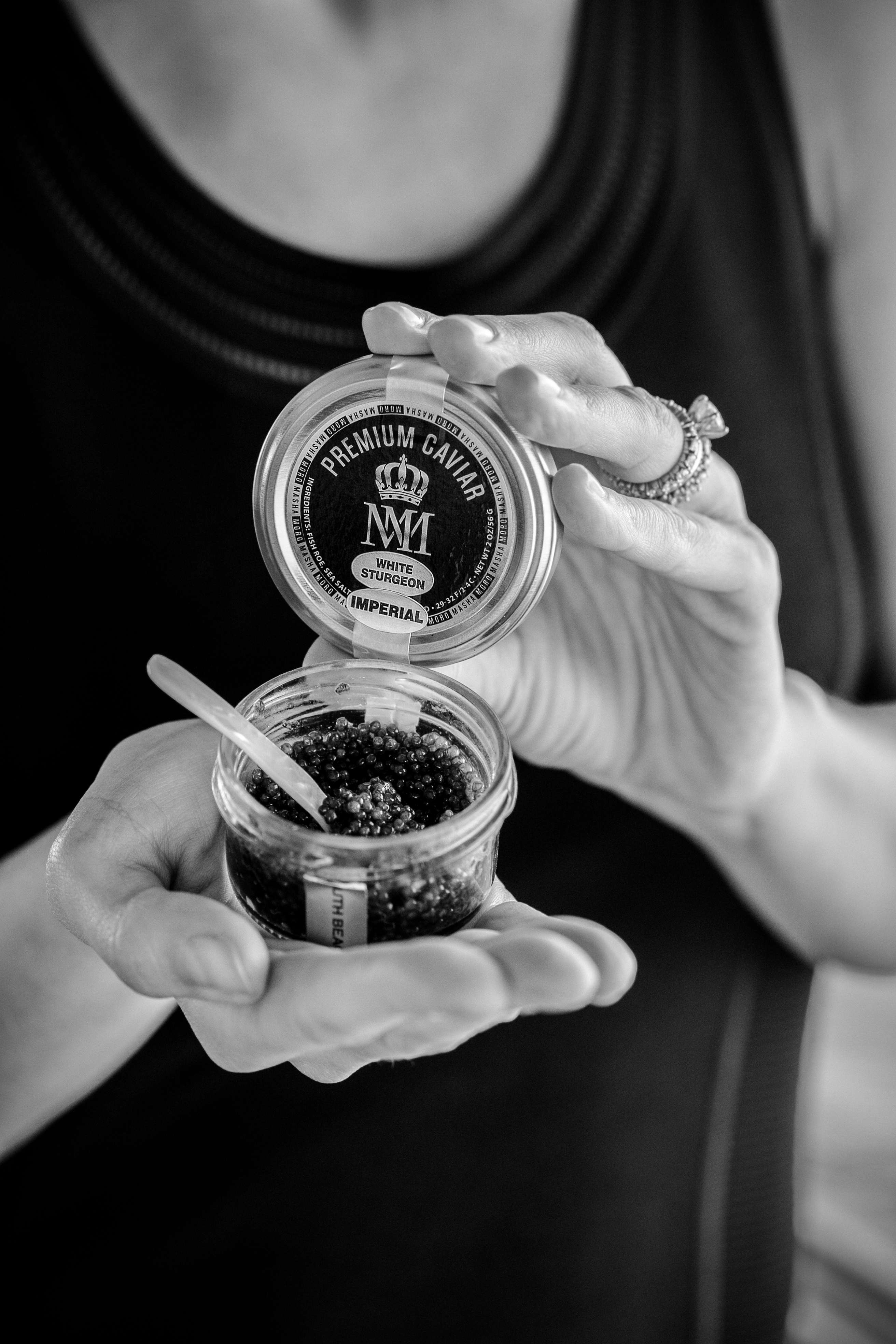top of page
Caviar Blog


Our Favorite Recipes
Blini with Buckwheat In a small saucepan, heat the milk and sugar until small bubbles appear around the edges of the pan. Remove the pan from the heat and cool until it is warm to the touch. Sprinkle in the yeast. Let stand for 5 minutes. In a large bowl, combine the flours and salt, sift. In a small saucepan, melt the butter. Stir the milk mixture well and add it and the melted butter to the flour mixture. Mix until smooth. Cover the bowl with plastic wrap and let rise in a


Serving Sizes Explained
There’s both art and science that go into planning a caviar tasting, whether it’s just a few close friends or a larger event with dozens of people. First, you’ve got to conjure up an elegant aesthetic, create a balanced menu, piece together a drink list, and make sure there’s a pleasant and festive flow to the evening. This is really your time to shine as a socialite! All that stuff sounds like fun, but figuring out the right amount of caviar to buy is a bit more tricky. If y


CAVIAR- The Original Superfood
Historically, people have always "just known" caviar is good for you. We now know one spoonful of caviar contains high levels of protein, magnesium, zinc, essential fats, antioxidants and omega-3 fatty acids making it a true superfood. Health Benefits of Caviar: Omega 3 Fatty Acids One gram of caviar packs an entire day's worth of Omega-3 Fatty Acids. "Omega-3 fatty acids are known to benefit the immune system by producing a group of chemicals called eicosanoids, which act


Types of Sturgeon Caviar
Sturgeon is the common name for the 27 species of fish belonging to the family Acipenseriformes. Sturgeon evolution dates back to the era of dinosaurs. They are long-lived, late-maturing fish with distinctive characteristics. Several species can grow quite large, typically ranging 7–12 ft in length. Here are several of the best caviar producing sturgeon: Beluga, or Great, sturgeon ( Huso huso ): Beluga sturgeon typically weigh 80 to 400 pounds when harvested and may weigh


The Russian Connection
Caviar was present in Russia as early as the 9th century. Due to the abundance of sturgeon in the rivers of Russia at that time, caviar and sturgeon meat was a part of a food supply for fishermen, hunters and commoners. Caviar did not become a delicacy until the 19th century, when a new method of salting sturgeon roe was applied. Only then, caviar was consumed fresh with vodka during banquets. Caviar gained such popularity among the royalty that Peter the Great ordered the c
bottom of page





